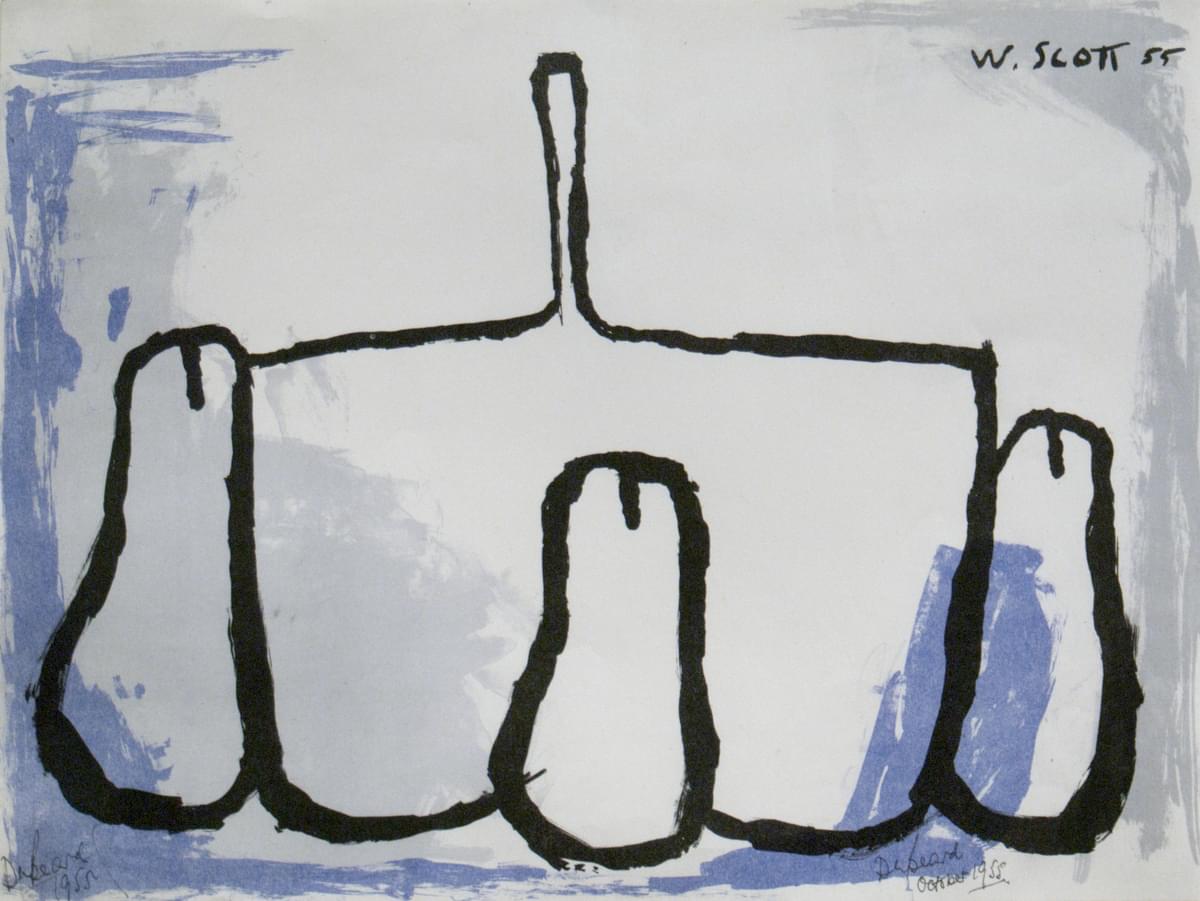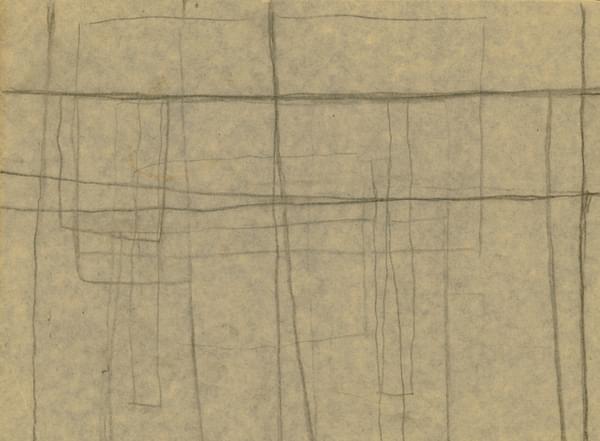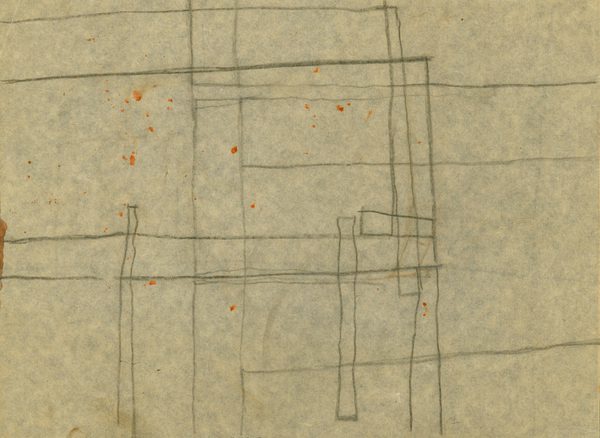Three Pears and Pan
Scott made two prints of similar subjects in 1955 although, for reasons which are not apparent, this blue version of Three Pears and Pan was never published. According to the artist's son, Robert Scott, it is possible that the work was intended to be included as a lithographic insert in a book which itself was unpublished, however there is no information available to corroborate this theory. It would appear that there are very few proofs in circulation, and this copy is signed Da. Beard, presumably by the printer at Corsham.
The still lives which Scott chose to depict, and which are instantly recognisable, were arrangements of pots and pans, eggs, pears, bottles and fish on a tabletop. Although his initial inspirations for this genre may have included admiration for the work of French painters such as Chardin and Braque, his criteria for judging whether his own still life paintings were a success were wholly different from those of the great artists before him. Unlike anyone else, Scott chose kitchen utensils as a recurring theme in his work because, he explained, he found them “completely uninteresting”* as objects. Such simple everyday items were merely building blocks for his paintings: they came without associations for him and, he hoped, the viewer. He felt that, with this subject matter, he was free to explore the arrangements and relationships between these ordinary shapes and hopefully to create tension from nothing. Unconsciously, his choice of such mundane objects mirrored the more general social austerity of ration-era post-war Britain and Scott, like all painters must, projected something in his still lives of the rationed age in which he lived. Nonetheless, he was incredibly inventive. Prolonged experimentation with the grouping of these objects in the final years of the 1940s, and again in the mid-1950s after a brief flirtation with abstraction, resulted in a mysterious dynamic – the individual objects in the pictures developed sexual characteristics. In seemingly innocent still lives, scenes of erotic drama could be deciphered by those familiar with Scott’s work. Scott himself often declined to comment upon this interpretation**, but his intentions were direct and unmistakable. Not only had his inanimate, everyday objects become animated, they had acquired personalities and, more importantly, gender.
*Alan Bowness, William Scott: Paintings, London, Lund Humphries 1964, p.10
**Ibid., p.8, Bowness quotes Scott as saying “These objects now take on another meaning, which is obscure, and I don’t personally like to point it out”
Three Pears and Pan
- Artist
- William Scott (1913-1989)
- Title
- Still Life: Three Pears and Pan
- Medium
- Lithograph
- Date
- 1955
- Sheet
- 25.2 x 33.4 cm
- Image
- 25.2 x 33.4 cm
- Edition
- Not editioned, signed and dated by the artist in the stone, signed twice in ink by the printer and dated "1st October 1955"
- Printer
- Printed at the Bath Academy of Art, Corsham Court
- Publisher
- Not published
- Literature
- Archeus 11
- Reference
- B0039
- Status
- No Longer Available
Available Artists
- Albers Anni
- Ancart Harold
- Andre Carl
- Avery Milton
- Baldessari John
- Barnes Ernie
- Castellani Enrico
- Clough Prunella
- Crawford Brett
- Dadamaino
- de Tollenaere Saskia
- Dyson Julian
- Elsner Slawomir
- Freud Lucian
- Gadsby Eric
- Gander Ryan
- Guston Philip
- Hartung Hans
- Hayes David
- Held Al
- Hepworth Barbara
- Hill Anthony
- Hitchens Ivon
- Hockney David
- Hutchinson Norman Douglas
- Jenney Neil
- Katz Alex
- Kentridge William
- Knifer Julije
- Kusama Yayoi
- Le Parc Julio
- Leciejewski Edgar
- Léger Fernand
- Levine Chris
- Marchéllo
- Martin Kenneth
- Mavignier Almir da Silva
- Miller Harland
- Mitchell Joan
- Modé João
- Moore Henry
- Morellet François
- Nadelman Elie
- Nara Yoshitomo
- Nesbitt Lowell Blair
- Nicholson Ben
- O'Donoghue Hughie
- Pasmore Victor
- Perry Grayson
- Picasso Pablo
- Pickstone Sarah
- Prehistoric Objects
- Riley Bridget
- Ruscha Ed
- Sedgley Peter
- Serra Richard
- Shrigley David
- Smith Anj
- Smith Richard
- Soto Jesús Rafael
- Soulages Pierre
- Spencer Stanley
- Taller Popular de Serigrafía
- The Connor Brothers
- Vasarely Victor
- Vaughan Keith
- Whiteread Rachel
- Wood Jonas


